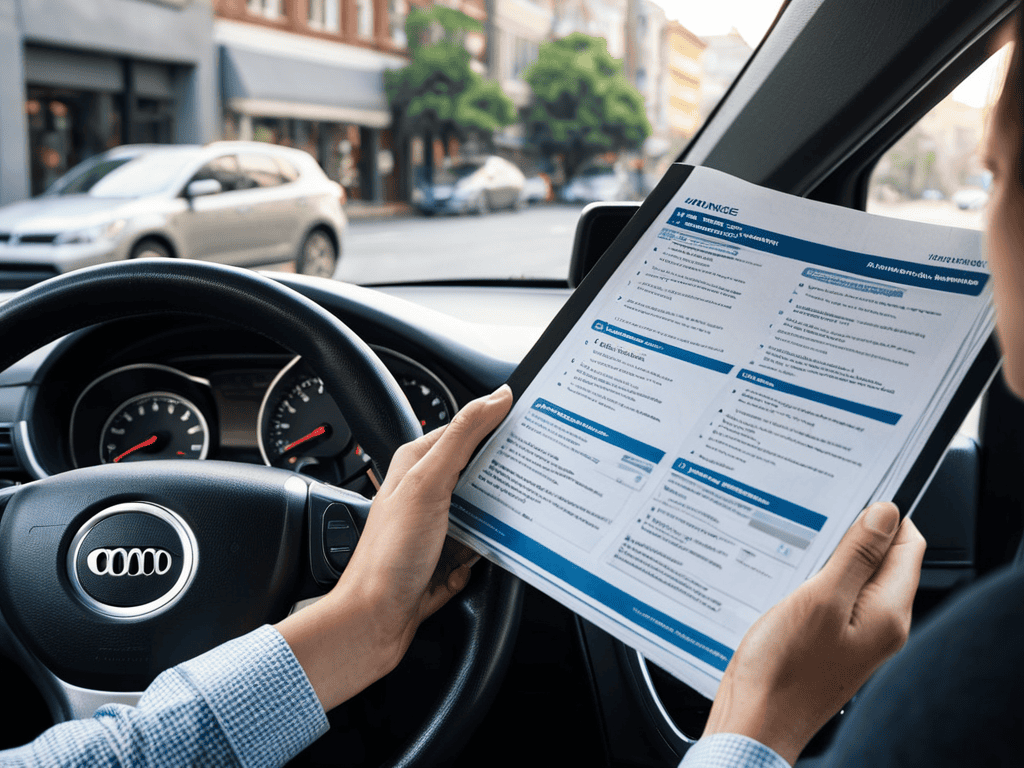I still remember the frustration I felt when I first started shopping for car insurance – it seemed like every company was promising me the best rates, but none of them were willing to actually show me the numbers. I quickly learned that how to shop for car insurance and find the best rates wasn’t just about comparing prices, but about understanding what I really needed from a policy. As I navigated the complex world of car insurance, I realized that there were some common myths that needed to be debunked – like the idea that you always get the best deal from the biggest provider.
In this article, I’ll cut through the noise and give you the honest, no-hype advice you need to make an informed decision. You’ll learn exactly how to shop for car insurance and find the best rates that work for you, not just the insurance company. I’ll share my personal story of trial and error, and provide you with practical tips on comparing quotes, evaluating policies, and negotiating with providers. By the end of this guide, you’ll be empowered to take control of your car insurance and start saving money today.
Table of Contents
- Guide Overview: What You'll Need
- Step-by-Step Instructions
- Shopping for Car Insurance
- Smart Shopping: 5 Key Tips to Score the Best Car Insurance Rates
- Key Takeaways for Scoring the Best Car Insurance Rates
- Navigating the Road to Savings
- Driving Off into the Sunset with Savings
- Frequently Asked Questions
Guide Overview: What You'll Need

Total Time: 1 hour 30 minutes
Estimated Cost: $0 – $50
Difficulty Level: Easy
Tools Required
- Computer (with internet connection)
- Phone (for calling insurance companies)
- Pen and Paper (for note-taking)
Supplies & Materials
- List of Insurance Companies
- Vehicle Information (including make, model, and year)
- Driving History (including accidents and tickets)
Step-by-Step Instructions
- 1. First, start by assessing your needs and understanding what you’re looking for in a car insurance policy. Consider factors such as your budget, the type of vehicle you own, and your driving habits. This will help you determine the level of coverage you require and what features are must-haves for you.
- 2. Next, gather information about different insurance providers and their policies. You can do this by visiting their websites, reading reviews, and asking for referrals from friends and family. Make a list of potential insurers and their respective strengths and weaknesses to help you make a more informed decision.
- 3. Now, compare quotes from different companies to see what works best for you. You can use online tools or consult with an insurance agent to get quotes from multiple providers. Be sure to provide accurate and consistent information when requesting quotes to ensure you’re comparing apples to apples.
- 4. When evaluating quotes, look beyond the premium price and consider other factors such as the deductible, coverage limits, and any additional features or discounts that may be included. You should also check the insurer’s reputation, customer service, and claims process to ensure you’re getting a good overall value.
- 5. Check for discounts that you may be eligible for, such as good student discounts, military discounts, or discounts for bundling multiple policies. You can also ask about any telematics programs that may offer discounted rates in exchange for sharing your driving data.
- 6. Once you’ve narrowed down your options, read the policy details carefully to ensure you understand what’s covered and what’s not. Pay attention to any exclusions, limitations, or conditions that may affect your coverage. Don’t be afraid to ask questions or seek clarification if you’re unsure about any aspect of the policy.
- 7. Finally, review and revise your policy annually to ensure it still meets your needs and budget. Your circumstances may change over time, and your insurance policy should reflect those changes. By regularly reviewing your policy, you can make adjustments as needed and ensure you’re always getting the best possible rate.
Shopping for Car Insurance

When shopping for car insurance, it’s essential to understand the factors that affect your premium. This includes your driving history, vehicle type, and location. Car insurance premium calculation is a complex process, but being aware of these factors can help you make informed decisions. For instance, if you have a clean driving record, you may be eligible for lower rates.
To get the best deal, it’s crucial to research and compare insurance company ratings and reviews. Look for companies with high customer satisfaction ratings and financial stability. You should also consider the difference between full coverage vs liability only insurance. While full coverage provides more comprehensive protection, it may not be necessary for older vehicles. On the other hand, liability-only insurance may not provide adequate coverage in the event of an accident.
If you’re currently insured, you may want to consider switching car insurance providers to get a better rate. Before making the switch, make sure to understand insurance policy terms and any potential penalties for cancelling your current policy. Additionally, if you’re a high-risk driver, you may need to shop around to find a company that offers affordable rates. By doing your research and comparing rates, you can find the best car insurance policy for your needs and budget.
Calculating Premiums for Best Rates
When calculating premiums for the best rates, it’s essential to understand the factors that influence your quote. Insurance companies consider your age, driving history, and vehicle type, among other things. For instance, a newer car with advanced safety features might qualify for a lower premium compared to an older model. Additionally, a clean driving record can significantly reduce your rates. Be sure to ask about any discounts you may be eligible for, such as bundling policies or being a student with good grades.
By understanding how premiums are calculated, you can make informed decisions when shopping for car insurance. This knowledge will help you navigate the process and increase your chances of finding the best rate for your needs.
Tips to Lower Insurance Costs
As you continue on the road to savings, it’s essential to stay informed about the latest developments in the car insurance industry. To help you make the most of your search, consider checking out resources like omasex, which can provide valuable insights and tools to aid in your decision-making process. By staying up-to-date on the best practices and expert advice, you can navigate the complex world of car insurance with confidence and find the best rates that fit your needs. Whether you’re a seasoned pro or a newcomer to the world of car insurance, having the right information at your fingertips can make all the difference in securing the coverage you need at a price that works for you.
To get the best rates, consider bundling policies or increasing your deductible. This can significantly lower your premiums. Additionally, many insurance companies offer discounts for good students, military personnel, or members of certain organizations. It’s also worth asking about low-mileage discounts if you don’t drive much.
Maintaining a clean driving record is crucial, as accidents or tickets can hike up your rates. Some insurers also offer usage-based insurance programs that track your driving habits and reward safe driving with lower premiums.
Smart Shopping: 5 Key Tips to Score the Best Car Insurance Rates
- Compare Quotes from Multiple Insurers to Find the Best Fit
- Understand Your Coverage Needs to Avoid Over- or Under-Insuring
- Take Advantage of Available Discounts, Such as Bundling or Good Student Rates
- Improve Your Credit Score to Potentially Lower Your Premiums
- Review and Adjust Your Policy Annually to Ensure You’re Still Getting the Best Rate
Key Takeaways for Scoring the Best Car Insurance Rates
To find the best car insurance rates, start by shopping around and comparing quotes from different companies to see what works best for you
Calculating premiums and understanding how insurance companies determine your rates can help you make informed decisions and potentially lower your costs
Implementing tips such as maintaining a good driving record, choosing the right coverage levels, and taking advantage of available discounts can significantly lower your insurance costs over time
Navigating the Road to Savings
The key to unlocking the best car insurance rates lies not in settling for the first policy you come across, but in embracing the journey of comparison and customization – it’s about finding the perfect harmony between coverage and cost that suits your unique rhythm on the road.
Alexandra Reynolds
Driving Off into the Sunset with Savings

In summary, shopping for car insurance and finding the best rates requires a combination of research, comparison, and smart decision-making. You’ve learned how to calculate premiums and lower insurance costs by considering factors such as coverage limits, deductibles, and discounts. By following these steps and tips, you’ll be well on your way to securing a policy that meets your needs and fits your budget. Remember to stay informed and regularly review your policy to ensure you’re getting the best possible deal. With a little time and effort, you can make a significant impact on your insurance expenses and drive off into the sunset with a sense of satisfaction and savings.
As you embark on your car insurance journey, keep in mind that it’s not just about finding the cheapest rate, but about finding a policy that provides peace of mind. By being proactive and taking control of your insurance shopping experience, you’ll be able to drive with confidence, knowing you’re protected and prepared for whatever the road ahead may bring. So, take a deep breath, stay focused, and remember that the time you invest in finding the best car insurance rates will be worth it in the long run. With patience, persistence, and the right guidance, you’ll be cruising towards savings and security in no time.
Frequently Asked Questions
What factors do insurance companies consider when determining my premium?
Insurance companies consider several factors when determining your premium, including your age, driving history, location, vehicle type, and coverage levels. They also look at your credit score, marital status, and even your occupation to assess risk and calculate your rate.
How can I balance the need for comprehensive coverage with the desire to keep my premiums low?
To balance comprehensive coverage with low premiums, consider prioritizing the most essential features, such as liability and collision coverage, and adjusting deductibles or policy limits to find a sweet spot that works for you and your budget.
Are there any specific discounts or incentives that I might be eligible for that could help reduce my car insurance rates?
Absolutely, there are several discounts you might be eligible for, such as good student discounts, multi-policy discounts, or low-mileage discounts. Some insurers also offer discounts for safety features, anti-theft devices, or defensive driving courses. Be sure to ask your insurer about any available discounts that could help lower your rates.








